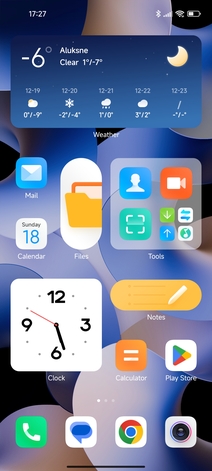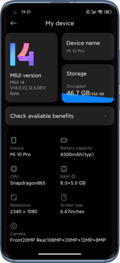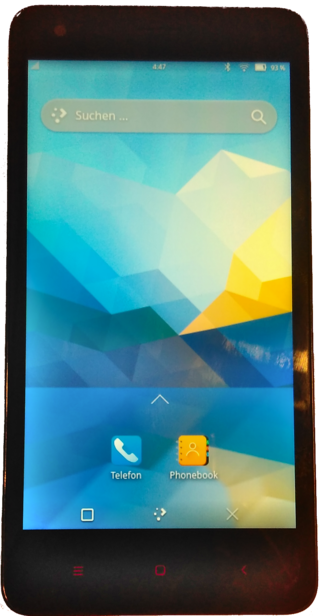| | |
| Developer | Xiaomi |
|---|---|
| OS family | Android-like OS (Android-based Linux OS) |
| Source model | Open source (Modified Android Base and Main Framework) with Proprietary components (MIUI Apps and Kits) [1] |
| Initial release | 0.8.16 / 16 August 2010 |
| Latest release | Varies by mobile phone and region. |
| Latest preview | V14.0.23.10.8.DEV (Mainland China) / 17 August 2023 |
| Marketing target | Alternative OS replacement for Android devices; Stock firmware for Xiaomi smartphone and tablet |
| Available in | 77 languages (varies by country) |
| Package manager | APK-based |
| Platforms | ARMv7, ARM64, MIPS, x86, x64 |
| Kernel type | Monolithic (modified Linux kernel) |
| License | Proprietary |
| Succeeded by | Xiaomi HyperOS |
| Official website | www home |
MIUI [lower-alpha 1] is a deprecated mobile operating system by Xiaomi for its smartphones and devices, from 2010 to 2023, [3] [4] [5] prior to the launch of its successor Xiaomi HyperOS. [6]
Contents
- Google Play services
- Comparison of all MIUI variants
- Android
- Issues
- Vulnerabilities
- Performance issues
- Version history
- See also
- Notes
- References
- External links
MIUI was based on the Android Open Source Project, and served as the basis for other OS deviations by Xiaomi: MIUI for Poco, MIUI Pad, MIUI Watch, and MIUI TV (PatchWall). [7]
There are different versions for each Xiaomi phone model, and each version has regional variants dependent on where the phone is sold, including China, Europe, Indonesia, India, Japan, Pakistan, Russia, Taiwan and Turkey. Xiaomi have also released a few devices running Google's Android One instead of MIUI. Xiaomi devices usually get three Android version updates, but get MIUI updates for four years (less for budget models). [8]
The first MIUI ROM, released in 2010, was based on Android 2.2.x Froyo and was initially developed in China by Xiaomi in its first year of operation. [9] Xiaomi added a number of apps to the basic framework, including Notes, Backup, Music, and Gallery apps. [10]
An organisation named Xiaomi Europe, using the domain xiaomi.eu and working officially with Xiaomi despite not being affiliated with the Chinese company, [11] was set up in 2010 as a community for English-language Xiaomi users with phones running MIUI associated with an Android version. The website issues its own stable and weekly versions of Xiaomi MIUI ROMs based on the stable, and on the weekly beta versions of the Chinese ROM. [11] Installing the xiaomi.eu ROM, however, voids the warranty on Xiaomi phones; according to the xiaomi.eu leader, the official ROM must be flashed and the bootloader locked before returning a device for warranty repair. [12]
Xiaomi is in the process of replacing MIUI with its new Android-based operating system named HyperOS, which has debuted with the Xiaomi 14 series. [13]
























